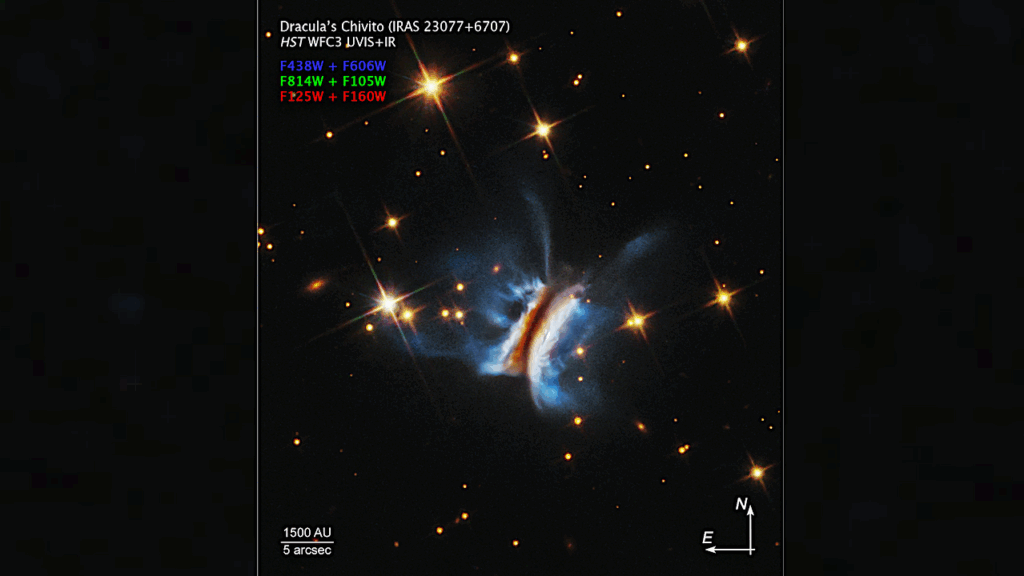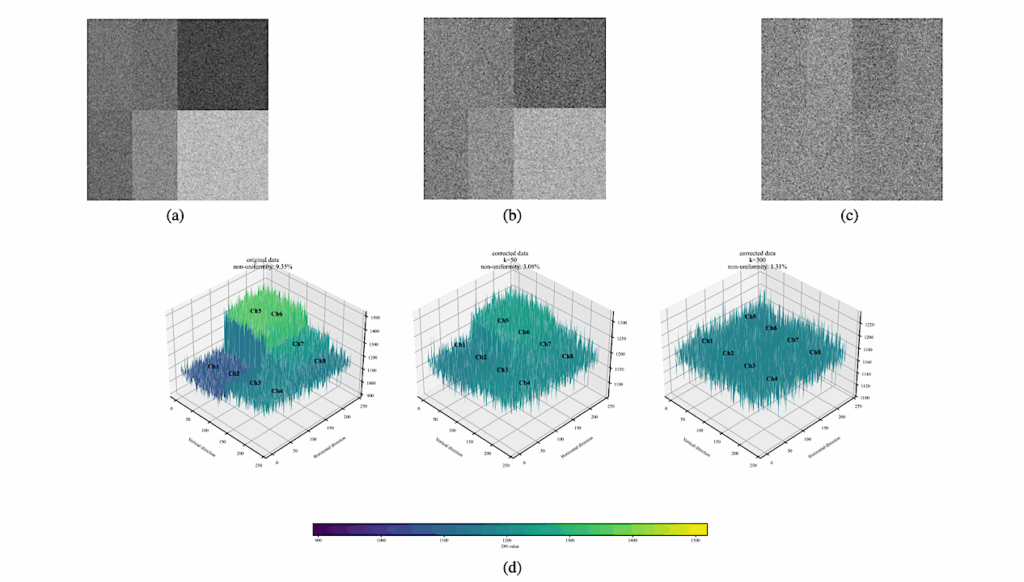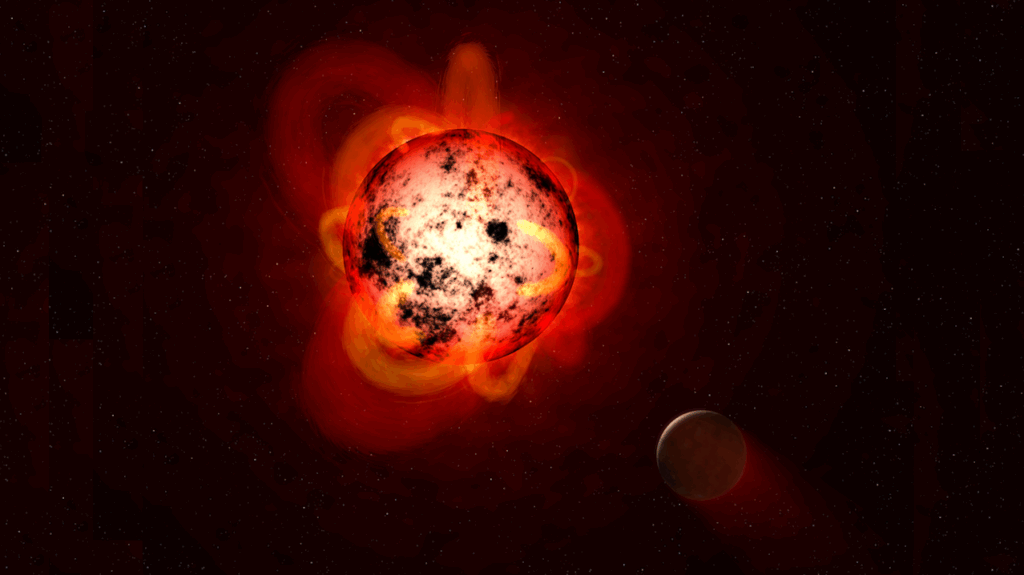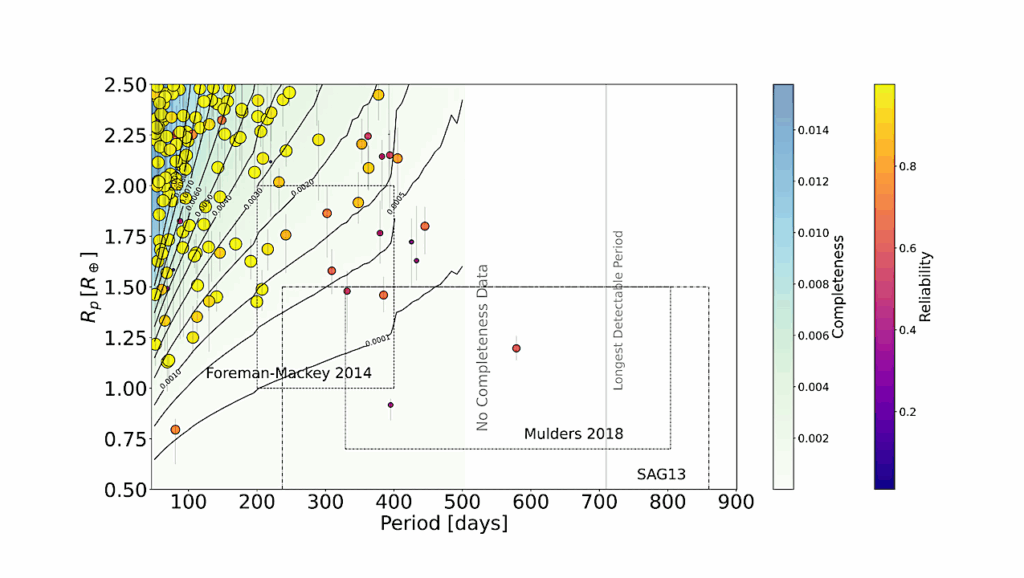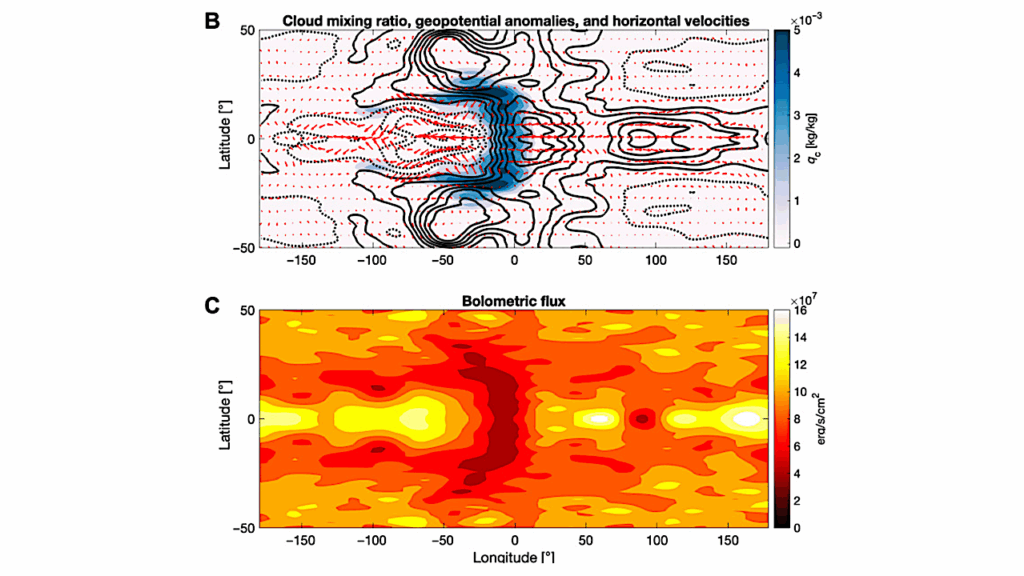Red Dwarf Stars Could Strip Away Planetary Protection

Red dwarf stars are the commonest type of stars, making up about 75% of the stars in our galaxy. They are much smaller and much less massive than our Sun and for that reason a lot dimmer. If planets are found around these stars, then given the number of red dwarfs, life could then be commonplace.
But a group of scientists led by Dr. Aline Vidotto of the University of St. Andrews has cast doubt on this idea. Their work suggests that the magnetic fields of red dwarfs could squash down those found around planets like the Earth, leaving any life vulnerable to radiation from space. Dr. Vidotto will present her work on Tuesday 2 July at the National Astronomy Meeting in St. Andrews, Scotland.
Because of their faintness, even small planets in orbit around red dwarf stars block out a significant amount of light if they pass between the star and the Earth. The low masses of these stars also mean that the gravitational pull of an Earth-sized planet is enough to make its star wobble as the planet moves around it. This motion leads to a back and forth shift in lines in the spectrum of the star that can be detected with telescopes on Earth.
Red dwarf stars are cooler than the Sun, so the so-called habitable or ‘Goldilocks’ zone where life could develop is much closer in than in our own solar system. Planets in the Goldilocks zone are at just the right temperature for liquid water to be found on their surfaces. All this makes red dwarfs prime targets in the search for Earth-like planets elsewhere in the galaxy. But there are other important factors that make planets good places to live such as a reasonably thick atmosphere.
Over billions of years, the impact of charged particles from space can erode a planetary atmosphere. Planets that have relatively strong magnetic fields (like the Earth) deflect these particles, at least within the surrounding region known as the magnetosphere, adding in a layer of protection for their atmospheres and making them more suitable for the creation and development of life.
A large proportion of the particles hitting a planet originate from the ‘stellar wind’ flowing off its host star. The pressure of these particles pushes against the magnetosphere of a planet, so whenever the stellar wind is strong, it compresses this magnetic shield. In the case of the Earth, the magnetosphere normally extends out to about 70,000 km.
Especially when they are relatively young, red dwarf stars have powerful magnetic fields of their own, with about a dozen of these being seen directly in recent years. These may have a very different effect on orbiting planets. Aline and her team have found that the extreme pressure from these fields may be strong enough to compress planetary magnetospheres enough that their atmospheres are stripped away completely over time, effectively rendering these worlds uninhabitable.
The new work shows that if the Earth was in orbit at the inner edge of the Goldilocks zone of a young red dwarf star, equivalent to the way it orbits the Sun, its magnetosphere would extend no more than 35,000 km and could even be crushed into the surface of the planet. To be benign environments for the development of life, Earth-like planets around red dwarfs will need very strong magnetic fields or be significantly further away from their stars, in which case they might be too cold for liquid water.
As stars age, their magnetic fields weaken, offering some respite for any planets in orbit around red dwarfs. The pace at which this happens will be a critical factor in how well the planetary atmospheres survive, but one way of refining the search for these objects will be to measure the speed of rotation of their stars, which also declines with age.
“Our work suggests that red dwarf stars with rotation periods larger than about one to a few months will have magnetic fields that won’t significantly squash the magnetosphere of an Earth-analogue planet orbiting inside the habitable zone of its host star,” says Aline. “Astronomers will have to take this on board in their search for life elsewhere — the conditions for habitability are turning out to be a lot more complex than we thought.”
Media Contacts:
Dr. Robert Massey
Royal Astronomical Society
+44 (0)794 124 8035 (cell)
[email protected]
Ms. Anita Heward
Royal Astronomical Society
+44 (0)7756 034 243 (cell)
[email protected]
Ms. Emma Shea
Head of Development Communications
University of St. Andrews
+44 (0)1334 462 167, cell: +44 (0)785 090 0352
[email protected]


